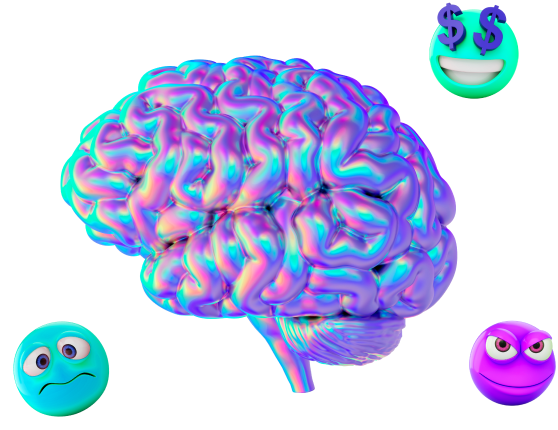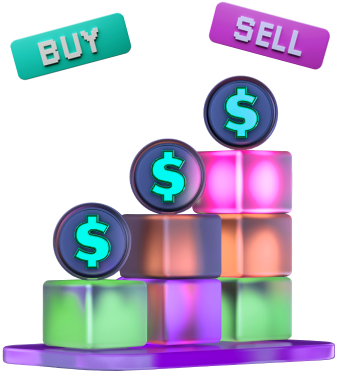Menu
La psychologie du trading fait référence aux composantes mentales et émotionnelles du processus de prise de décision dans le trading. Il représente les aspects de la personnalité et des comportements d'un trader qui ont un impact sur les résultats du trading.
Ces aspects du caractère d'une personne se manifestent de multiples façons, que ce soit par la peur, l'avidité, l'arrogance ou même l'espoir. Mais des quatre émotions, la peur et l'avidité sont considérées comme ayant une influence primordiale sur la psychologie du trading, notamment en ce qui concerne la prise de risque et la discipline.
Être trop gourmand peut mener à des décisions jugées trop risquées. Si vous avez trop peur, vous risquez de rater des occasions ou d'entraver votre trading avec une faible plus-value. Le développement de la conscience de soi est susceptible d'aider un trader à identifier les schémas comportementaux négatifs récurrents et la manière dont ils obscurcissent son jugement.
Le trader peut ainsi s'attaquer à ces comportements afin de garantir l'objectivité et la rationalité de ses transactions.

L'étude de la psychologie du trading s'intéresse aux raisons qui poussent les traders à prendre des décisions potentiellement insensées sur le marché ou dans d'autres domaines financiers. La finance comportementale, en particulier, associe la psychologie et la finance pour étudier l'impact du comportement humain sur les choix financiers et les résultats du trading.
En d'autres termes, elle identifie les influences et les préjugés psychologiques qui déterminent le comportement des traders et des professionnels de la finance et explore la manière dont ce comportement peut affecter les résultats du marché. La finance comportementale est également examinée afin de mieux comprendre les différents résultats dans une série de secteurs et d'industries.
En outre, la finance comportementale considère que les acteurs financiers ne sont pas entièrement rationnels ou parfaitement maîtres d'eux-mêmes. Au contraire, ils sont influencés par des facteurs psychologiques et possèdent des tendances relativement normales à l'autocontrôle. La finance comportementale prétend également que la prise de décision dans le contexte de la finance est déterminée par le bien-être mental et physique de chacun.
En d'autres termes, l'état mental d'une personne fluctue en fonction de son état de santé général. Parmi les biais comportementaux les plus courants, citons l'excès de confiance, le comportement grégaire, la comptabilité mentale, l'écart émotionnel, l'ancrage, l'auto-attribution et l'aversion à la perte.


Le trading émotionnel (ou l'investissement émotionnel) est un autre terme populaire relevant de la psychologie du trading. Semblable à la finance comportementale, le trading émotionnel fait référence aux impulsions comportementales déclenchées par la volatilité des marchés, qui se traduisent par l'achat ou la vente d'actifs sous le coup de l'émotion.
Le trading émotionnel peut être influencé par toute une série d'émotions, telles que la panique, l'avidité, l'excitation, la peur et même l'excès de confiance.
En d'autres termes, elle identifie les influences et les préjugés psychologiques qui déterminent le comportement des traders et des professionnels de la finance et explore la manière dont ce comportement peut affecter les résultats du marché. La finance comportementale est également examinée afin de mieux comprendre les différents résultats dans une série de secteurs et d'industries.
S'engager dans une formation continue et investir dans son développement personnel aidera un trader à acquérir des compétences vitales telles que l'autorégulation, l'empathie et la confiance en soi.

Un autre aspect essentiel de la psychologie du trading est le concept d'instinct de trading, c'est-à-dire les sentiments intuitifs que les traders peuvent ressentir lorsqu'ils prennent des décisions sur les marchés financiers.
Faire confiance à son instinct suppose toutefois une solide conscience de soi et la capacité de distinguer une décision légitime et rationnelle d'une décision prise sous le coup d'une impulsion émotionnelle. C'est se rendre compte que son objectivité peut être faussée ou obscurcie par des préjugés et prendre les mesures nécessaires pour rectifier le problème.
Trois des phénomènes psychologiques les plus courants ayant un impact sur la prise de décision rationnelle sont les préjugés d'origine sensorielle (se forger une opinion sur la base d'informations potentiellement biaisées), le fait d'éviter le vague (peur de l'inconnu) et la tangibilité de l'anticipation (lorsque le sentiment d'anticipation devient le centre d'intérêt au lieu de la réalisation de ce qui est anticipé en premier lieu).

T4Trade, dont le siège social est situé à F20, 1st Floor, Eden Plaza, Eden Island, Seychelles, est un nom commercial de Tradeco Limited.
Damadah Holding Limited, dont le siège social est situé au 365 Agiou Andreou, Efstathiou Court, Flat 201, 3035 Limassol, Chypre, facilite la prestation de services à Tradeco Limited, y compris, mais sans s'y limiter, les services de paiement.
Tradeco Limited est autorisé et réglementé par la Seychelles Financial Services Authority sous le numéro de licence SD029.
Avertissement sur les risques :
Nos produits sont négociés sur marge et comportent un niveau de risque élevé et la possibilité de perdre tout votre capital. Ces produits peuvent ne pas convenir à tout le monde et vous devez vous assurer que vous comprenez les risques encourus.
T4Trade ne s'adresse pas aux résidents de l'Union européenne, où il n'est pas sous licence. T4Trade n'offre pas ses services aux résidents de certaines juridictions telles que les États-Unis, l'Iran, Cuba, le Soudan, la Syrie et la Corée du Nord.
Documents juridiques
Merci de votre visite sur le site de T4Trade
Ce site web n'est pas destiné aux résidents de l'UE et ne relève pas du cadre réglementaire européen et de MiFID II.
Veuillez cliquer ci-dessous si vous souhaitez quand même continuer à utiliser T4Trade.
Merci de votre visite sur le site de T4Trade
Ce site Web n'est pas destiné aux résidents du Royaume-Uni et ne relève pas du cadre réglementaire européen et de MiFID II, ni des règles, conseils et protections définis dans le manuel de la Financial Conduct Authority du Royaume-Uni.
Veuillez cliquer ci-dessous si vous souhaitez quand même continuer à utiliser T4Trade.